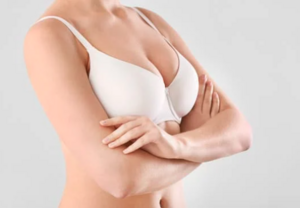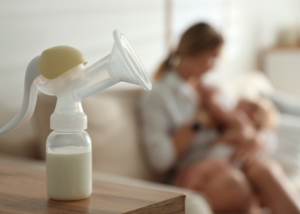Women’s Breast Health Information

Women’s Breast Health Information –
Regular Check-Ups and Self-Exams :
Good and up-to-date women’s breast health information is crucial to every woman’s overall health. As a woman, it is essential to take care of your breasts by understanding their anatomy, checking them regularly, and taking steps to maintain their health. By doing so, you can detect any issues early on and prevent potential health problems.
Natural breast health is an important aspect of breast care. A healthy diet and regular exercise can help reduce the risk of breast cancer and other breast-related health issues. Additionally, using the right breast pump can help maintain breast health, whether you have small or larger breasts. If you are considering breast implants, is also essential to consider their impact on breast health and breastfeeding .
Breast cancer is a common health concern for women, and it is crucial to have basic information about it. Understanding the risk factors, symptoms, and screening options can help with early detection and treatment. Here are some frequently asked questions about breast health that can help you take care of your breasts and maintain your overall health.
Key Takeaways: Women’s Breast Health Information
- Breast health is crucial for women’s overall health.
- Natural breast health includes a healthy diet, exercise, and the right breast pump.
- Understanding breast cancer risk factors, symptoms, and screening options is essential for early detection and treatment.
Women’s Breast Health Information
Taking care of your breasts is an essential part of your overall health. Breast cancer is one of the leading causes of death among women, so it’s important to be proactive about your breast health. Here are some tips to help you maintain healthy breasts.
Breast Health Tips
- Perform monthly breast self-exams to check for any lumps or changes in your breasts. If you notice anything unusual, see your doctor immediately.
- Get a mammogram every one to two years starting at age 40, or earlier if you have a family history of breast cancer.
- Maintain a healthy lifestyle by eating a balanced diet, exercising regularly, and avoiding smoking and excessive alcohol consumption.
- Wear a properly fitting bra to support your breasts and prevent sagging. Avoid wearing bras that are too tight or have underwires that dig into your skin.
- Limit your exposure to environmental toxins that can increase your risk of breast cancer, such as pesticides and chemicals.
Breast Health Bra
Wearing a bra that fits properly is crucial for maintaining good breast health. A poorly fitting bra can cause discomfort, back pain, and even damage to breast tissue. Here are some tips for choosing the right bra:
- Get measured by a professional to determine your correct bra size. Your bra size can change over time, so it’s important to get measured regularly.
- Look for a bra with wide, supportive straps that won’t dig into your shoulders.
- Choose a bra with a wide band that fits snugly around your ribcage to provide support.
- Avoid bras with underwires that can dig into your skin and cause discomfort.
- Consider wearing a sports bra during exercise to provide extra support and prevent breast movement.
Remember, taking care of your breasts is an essential part of your overall health. By following these breast health tips and choosing the right bra, you can maintain healthy breasts and reduce your risk of breast cancer.
Natural Breast Health Information
Maintaining good breast health is important for women of all ages. In addition to regular check-ups and self-exams, there are many natural ways to support breast health. Here are some natural methods that can help keep your breasts healthy.
Breast Health Information: Vitamins and Minerals
Certain vitamins and minerals have been shown to support breast health. Vitamin D, for example, is important for breast health because it helps the body absorb calcium, which is crucial for strong bones. Calcium is also important for breast health, as it helps to prevent breast cancer. Other important vitamins and minerals for breast health include vitamin A, vitamin C, and selenium.
Herbs for Breast Health
Herbs have been used for centuries to support breast health. Some popular herbs for breast health include fenugreek, fennel, and red clover. Fenugreek is believed to help increase breast milk production, while fennel is thought to help regulate hormones. Red clover is believed to have anti-cancer properties and may help prevent breast cancer.
Essential Oils for Breast Health
Essential oils can be used to support breast health as well. Frankincense oil, for example, is believed to have anti-cancer properties and may help prevent breast cancer. Lavender oil is also thought to have anti-cancer properties and may help reduce breast cancer risk. Other essential oils that may be beneficial for breast health include rosemary, lemon, and grapefruit.
RELATED INFORMATION: Stretch Marks – How To Get Rid Of Them
Best Foods for Breasts:
Women’s Breast Health Information
Eating a healthy diet is important for overall health, including breast health. Some of the best foods for breast health include cruciferous vegetables like broccoli and cauliflower, which are high in antioxidants that can help prevent breast cancer.
Other foods that are good for breast health include berries, nuts, and seeds, which are high in vitamins and minerals that support breast health. It is also important to limit your intake of processed foods, alcohol, and caffeine, as these can increase breast cancer risk.
Incorporating these natural methods into your routine can help support breast health and reduce your risk of breast cancer. Remember to always consult with your healthcare provider before starting any new supplements or treatments.

Women’s Breast Health Information:
Pump for Small Breast
When it comes to finding the best breast pump for small breasts, there are a few factors to consider. Here are some key features to look for:
1. Flange Size
It’s important to choose a breast pump with a flange size that fits your nipple comfortably. If the flange is too large, it can cause discomfort and reduce milk flow. Look for pumps that offer different flange sizes or have adjustable flanges to ensure a good fit.
2. Portability
If you’re planning to pump on-the-go or at work, portability is key. Look for breast pumps that are compact and lightweight, with rechargeable batteries or the option to use batteries. This will allow you to pump discreetly and conveniently.
3. Suction Strength
A breast pump with adjustable suction strength can be beneficial for women with small breasts. A lower suction strength can be more comfortable and effective for milk expression. Look for pumps with different suction settings to find the right one for you.
Overall, the Spectra breast pump is a great option for women with small breasts. It offers different flange sizes, is portable and rechargeable, and has adjustable suction strength. Remember to always choose a breast pump that fits your needs and preferences.
Best Breast Pump for Bigger Breast
If you have larger breasts, finding the right breast pump can be a challenge. You need a pump that is comfortable, efficient, and effective at extracting milk. Here are some factors to consider when choosing the best breast pump for bigger breasts:
Suction strength
A breast pump with adjustable suction strength is essential for larger breasts. Too much suction can cause discomfort or even pain, while too little suction may not extract enough milk. Look for a pump that allows you to adjust the suction to your comfort level.
Breast shield size
Breast shield size is another important factor to consider when choosing a breast pump. If the breast shield is too small, it can cause discomfort or even damage to the breast tissue. On the other hand, if the breast shield is too large, it may not provide enough suction to extract milk efficiently. Look for a pump that offers a range of breast shield sizes to choose from.
Double pumping
Double pumping is a great option for women with larger breasts. It allows you to pump both breasts at the same time, which can save time and increase milk production. Look for a pump that offers a double pumping option.
In conclusion, when choosing the best breast pump for bigger breasts, it’s important to consider suction strength, breast shield size, and double pumping options. With the right pump, you can make pumping a comfortable and efficient part of your breastfeeding routine.
Breast Feeding and Breast Implants
If you have breast implants and are planning to breastfeed, you may be wondering if it’s safe for your baby and if you’ll be able to produce enough milk. The good news is that most women with breast implants are able to breastfeed successfully. However, there are a few things to keep in mind.
Firstly, whether you’re able to breastfeed depends on the original state of your breasts before surgery. If you had a breast augmentation surgery that involved incisions around your areolas, you may have damaged milk ducts that can affect your ability to produce milk. Similarly, if your implants were placed under your chest muscles, it may be more difficult to breastfeed.
It’s important to note that breast implants themselves do not pose any risks to your baby during breastfeeding. The silicone or saline used in implants is not harmful to your baby, and there is no evidence that it can affect the quality or quantity of your breast milk. However, there is a small chance that the surgery may damage your milk ducts, which can affect your milk supply.
If you’re planning to breastfeed with breast implants, it’s a good idea to talk to your doctor or a lactation consultant before your baby is born. They can help you determine if you’re likely to have any issues with milk supply or breastfeeding, and provide you with tips and advice to help you succeed. With the right support and preparation, most women with breast implants are able to breastfeed their babies successfully.
RELATED INFORMATION: How To Treat Anxiety Disorders
Basic Information About Breast Cancer
Breast cancer is a disease that affects the cells in the breast. It is the second most common cancer in women after skin cancer. Breast cancer can begin in different parts of the breast, such as the ducts that carry milk to the nipple or the glands that produce milk.
What is a Breast Ultrasound?
A breast ultrasound is a non-invasive medical test that uses high-frequency sound waves to produce images of the internal structures of the breast. It is used to help identify the cause of breast lumps or other abnormalities found during a physical exam, mammogram, or other imaging tests.
Best Time to do a Breast Ultrasound
The best time to do a breast ultrasound is usually after a mammogram or physical exam has shown an abnormality in the breast. It is not typically used as a routine screening tool for breast cancer, but may be recommended for women who have dense breast tissue or who are at high risk for breast cancer.
In conclusion, breast cancer is a serious disease that can affect any woman. If you have concerns about your breast health, it is important to talk to your healthcare provider about your risk factors and any symptoms you may be experiencing. A breast ultrasound may be recommended in certain situations, but should always be done in consultation with your healthcare provider.
Women’s Breast Health Information:
Frequently Asked Questions
How can I maintain healthy breasts?
Maintaining healthy breasts involves a combination of factors, including maintaining a healthy weight, exercising regularly, and avoiding smoking and excessive alcohol consumption. It is also important to wear a supportive bra during physical activity and to limit your exposure to environmental toxins.
What are some common breast problems and how can they be treated?
Common breast problems include breast pain, lumps, and nipple discharge. These can often be treated with medication, such as pain relievers and antibiotics. In some cases, surgery may be necessary to remove a lump or cyst.
What are the warning signs of breast cancer?
The warning signs of breast cancer include a lump or thickening in the breast or underarm area, changes in the size or shape of the breast, nipple discharge or inversion, and skin changes, such as redness or dimpling. It is important to see a healthcare provider if you experience any of these symptoms.
What lifestyle changes can I make to reduce my risk of breast cancer?
Making lifestyle changes such as maintaining a healthy weight, exercising regularly, and limiting alcohol consumption can help reduce your risk of breast cancer. It is also important to avoid exposure to environmental toxins and to breastfeed if possible.
What are the risk factors for breast cancer?
Risk factors for breast cancer include being female, increasing age, a family history of breast cancer, certain genetic mutations, and exposure to radiation. Other factors such as early onset of menstruation and late menopause can also increase your risk.
How often should I perform a breast self-exam?
It is recommended that you perform a breast self-exam once a month. This can help you become familiar with the normal look and feel of your breasts, making it easier to detect any changes. If you notice any changes, it is important to see a healthcare provider.





